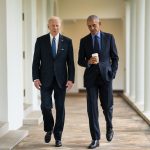The daytime television landscape is shifting, and it’s no shock to see “The View” floundering amid self-imposed political storms. While the show once thrived on witty exchanges and a touch of lighthearted controversy, it’s clear that relentless leftist rhetoric has eroded its appeal with a large chunk of the American public. Many viewers, tuning in for friendly banter and entertainment, have grown tired of the daily lectures and increasingly partisan discourse that offers little more than a mouthpiece for the progressive agenda.
Numbers don’t lie—even if “The View” still boasts millions of viewers, the fluctuations and comparative losses to Fox’s “The Faulkner Focus” speak volumes. Viewers have choices, and more are voting with their remotes, seeking programs willing to feature dissenting opinions or, at the very least, refrain from berating half the nation for holding traditional values. The left-leaning echo chamber of “The View” may satisfy hardline ideologues, but it alienates anyone looking for balanced conversation or genuine analysis.
It’s telling that rumors quickly spread about “The View” facing regulatory action, when in fact the FCC’s scrutiny has been elsewhere. This overblown panic reveals a vulnerability: if your programming hinges on out-of-touch political grandstanding, it’s easy to believe the whole structure could crumble at the first sign of real accountability. The absence of real consequences doesn’t change the underlying problem—cultural arrogance and a refusal to self-reflect when ratings slide.
Joy Behar’s cryptic remarks about a potential hiatus hint at internal recognition that the show must adapt or fade away. With speculation swirling and confirmations of a production pause, even longtime panelists seem aware that endless political preaching just isn’t resonating. There’s a bitter irony in watching a program built on “diverse opinions” devolve into one-sided talking points that leave a majority of Americans feeling unwelcome in the conversation.
Ultimately, “The View” now finds itself at a crossroads. Will it double down on divisive rhetoric, or rediscover the format that once made it a staple of American daytime TV? For those who recognize the need for open debate—rather than monologues—there’s hope that fresh voices and real dialogue might eventually return. Until then, viewers will continue to search for midday programming that offers more substance than a scolding and more entertainment than an agenda.




